Golan Pundak
Deferred NAM: Low-latency Top-K Context Injection via DeferredContext Encoding for Non-Streaming ASR
Apr 15, 2024



Abstract:Contextual biasing enables speech recognizers to transcribe important phrases in the speaker's context, such as contact names, even if they are rare in, or absent from, the training data. Attention-based biasing is a leading approach which allows for full end-to-end cotraining of the recognizer and biasing system and requires no separate inference-time components. Such biasers typically consist of a context encoder; followed by a context filter which narrows down the context to apply, improving per-step inference time; and, finally, context application via cross attention. Though much work has gone into optimizing per-frame performance, the context encoder is at least as important: recognition cannot begin before context encoding ends. Here, we show the lightweight phrase selection pass can be moved before context encoding, resulting in a speedup of up to 16.1 times and enabling biasing to scale to 20K phrases with a maximum pre-decoding delay under 33ms. With the addition of phrase- and wordpiece-level cross-entropy losses, our technique also achieves up to a 37.5% relative WER reduction over the baseline without the losses and lightweight phrase selection pass.
* 9 pages, 3 figures, accepted by NAACL 2024 - Industry Track
SLM: Bridge the thin gap between speech and text foundation models
Sep 30, 2023



Abstract:We present a joint Speech and Language Model (SLM), a multitask, multilingual, and dual-modal model that takes advantage of pretrained foundational speech and language models. SLM freezes the pretrained foundation models to maximally preserves their capabilities, and only trains a simple adapter with just 1\% (156M) of the foundation models' parameters. This adaptation not only leads SLM to achieve strong performance on conventional tasks such as speech recognition (ASR) and speech translation (AST), but also introduces the novel capability of zero-shot instruction-following for more diverse tasks: given a speech input and a text instruction, SLM is able to perform unseen generation tasks including contextual biasing ASR using real-time context, dialog generation, speech continuation, and question answering, etc. Our approach demonstrates that the representational gap between pretrained speech and language models might be narrower than one would expect, and can be bridged by a simple adaptation mechanism. As a result, SLM is not only efficient to train, but also inherits strong capabilities already acquired in foundation models of different modalities.
Contextual Biasing with the Knuth-Morris-Pratt Matching Algorithm
Sep 29, 2023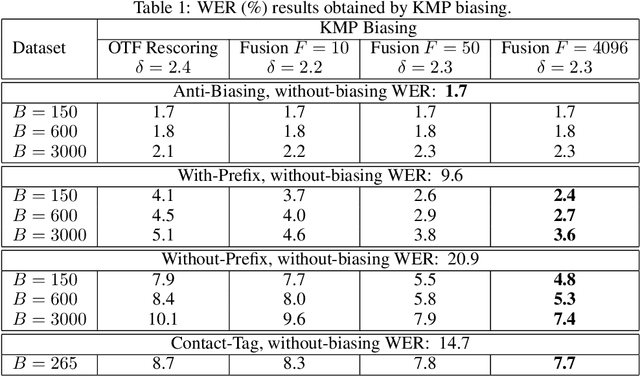
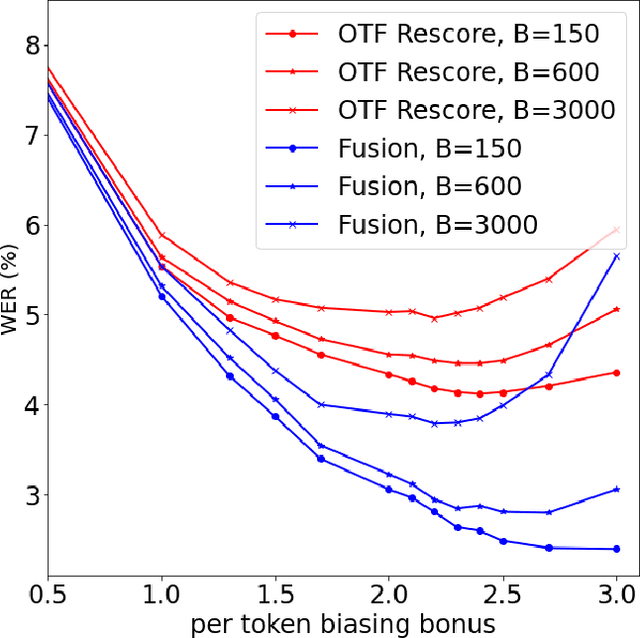
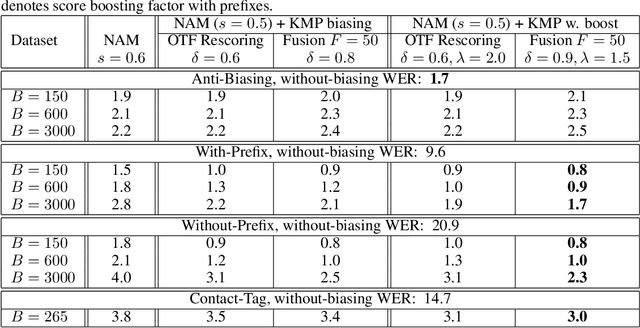
Abstract:Contextual biasing refers to the problem of biasing the automatic speech recognition (ASR) systems towards rare entities that are relevant to the specific user or application scenarios. We propose algorithms for contextual biasing based on the Knuth-Morris-Pratt algorithm for pattern matching. During beam search, we boost the score of a token extension if it extends matching into a set of biasing phrases. Our method simulates the classical approaches often implemented in the weighted finite state transducer (WFST) framework, but avoids the FST language altogether, with careful considerations on memory footprint and efficiency on tensor processing units (TPUs) by vectorization. Without introducing additional model parameters, our method achieves significant word error rate (WER) reductions on biasing test sets by itself, and yields further performance gain when combined with a model-based biasing method.
Improving Proper Noun Recognition in End-to-End ASR By Customization of the MWER Loss Criterion
May 19, 2020



Abstract:Proper nouns present a challenge for end-to-end (E2E) automatic speech recognition (ASR) systems in that a particular name may appear only rarely during training, and may have a pronunciation similar to that of a more common word. Unlike conventional ASR models, E2E systems lack an explicit pronounciation model that can be specifically trained with proper noun pronounciations and a language model that can be trained on a large text-only corpus. Past work has addressed this issue by incorporating additional training data or additional models. In this paper, we instead build on recent advances in minimum word error rate (MWER) training to develop two new loss criteria that specifically emphasize proper noun recognition. Unlike past work on this problem, this method requires no new data during training or external models during inference. We see improvements ranging from 2% to 7% relative on several relevant benchmarks.
A Streaming On-Device End-to-End Model Surpassing Server-Side Conventional Model Quality and Latency
Mar 28, 2020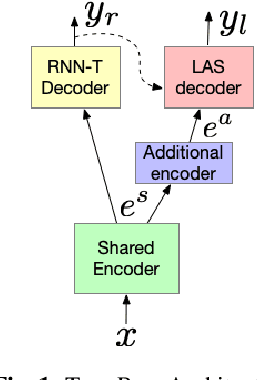
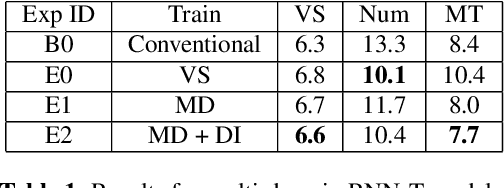
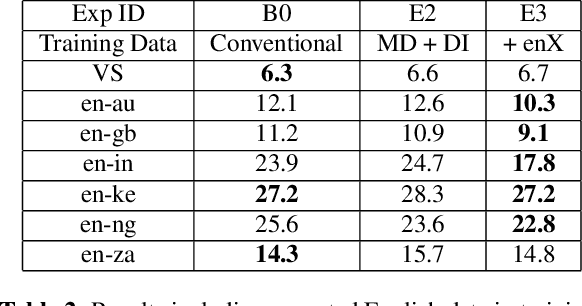
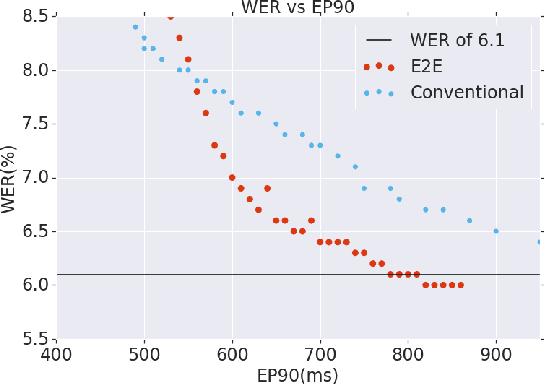
Abstract:Thus far, end-to-end (E2E) models have not been shown to outperform state-of-the-art conventional models with respect to both quality, i.e., word error rate (WER), and latency, i.e., the time the hypothesis is finalized after the user stops speaking. In this paper, we develop a first-pass Recurrent Neural Network Transducer (RNN-T) model and a second-pass Listen, Attend, Spell (LAS) rescorer that surpasses a conventional model in both quality and latency. On the quality side, we incorporate a large number of utterances across varied domains to increase acoustic diversity and the vocabulary seen by the model. We also train with accented English speech to make the model more robust to different pronunciations. In addition, given the increased amount of training data, we explore a varied learning rate schedule. On the latency front, we explore using the end-of-sentence decision emitted by the RNN-T model to close the microphone, and also introduce various optimizations to improve the speed of LAS rescoring. Overall, we find that RNN-T+LAS offers a better WER and latency tradeoff compared to a conventional model. For example, for the same latency, RNN-T+LAS obtains a 8% relative improvement in WER, while being more than 400-times smaller in model size.
Phoneme-Based Contextualization for Cross-Lingual Speech Recognition in End-to-End Models
Jul 22, 2019


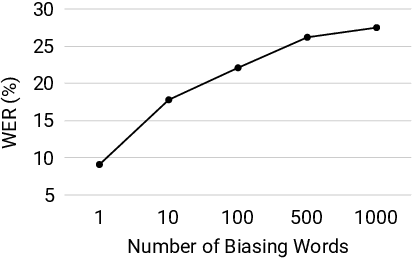
Abstract:Contextual automatic speech recognition, i.e., biasing recognition towards a given context (e.g. user's playlists, or contacts), is challenging in end-to-end (E2E) models. Such models maintain a limited number of candidates during beam-search decoding, and have been found to recognize rare named entities poorly. The problem is exacerbated when biasing towards proper nouns in foreign languages, e.g., geographic location names, which are virtually unseen in training and are thus out-of-vocabulary (OOV). While grapheme or wordpiece E2E models might have a difficult time spelling OOV words, phonemes are more acoustically salient and past work has shown that E2E phoneme models can better predict such words. In this work, we propose an E2E model containing both English wordpieces and phonemes in the modeling space, and perform contextual biasing of foreign words at the phoneme level by mapping pronunciations of foreign words into similar English phonemes. In experimental evaluations, we find that the proposed approach performs 16% better than a grapheme-only biasing model, and 8% better than a wordpiece-only biasing model on a foreign place name recognition task, with only slight degradation on regular English tasks.
Lingvo: a Modular and Scalable Framework for Sequence-to-Sequence Modeling
Feb 21, 2019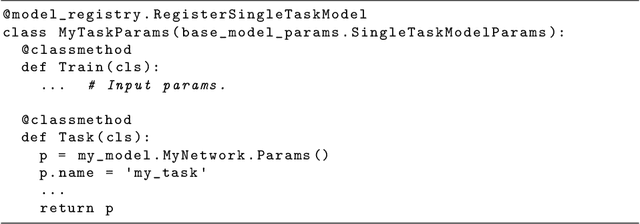
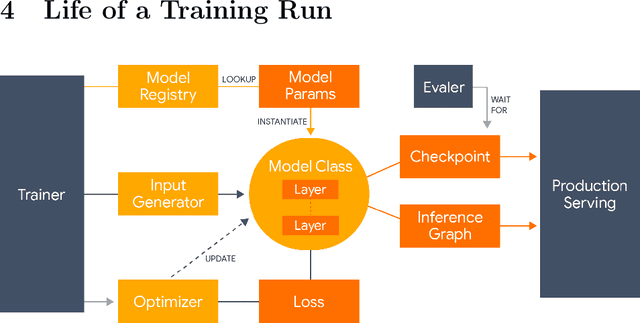
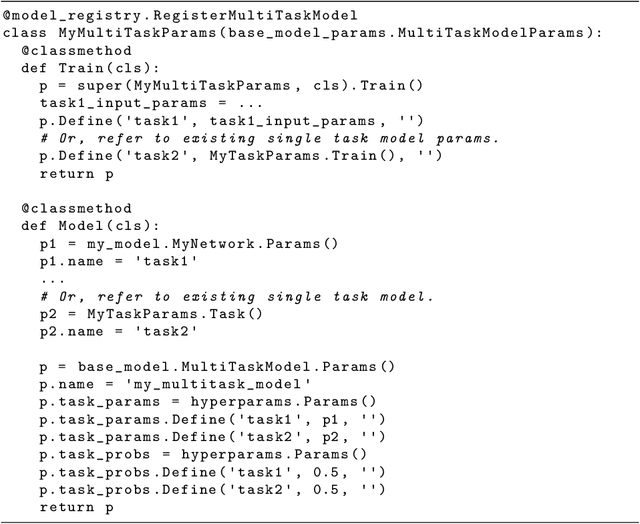
Abstract:Lingvo is a Tensorflow framework offering a complete solution for collaborative deep learning research, with a particular focus towards sequence-to-sequence models. Lingvo models are composed of modular building blocks that are flexible and easily extensible, and experiment configurations are centralized and highly customizable. Distributed training and quantized inference are supported directly within the framework, and it contains existing implementations of a large number of utilities, helper functions, and the newest research ideas. Lingvo has been used in collaboration by dozens of researchers in more than 20 papers over the last two years. This document outlines the underlying design of Lingvo and serves as an introduction to the various pieces of the framework, while also offering examples of advanced features that showcase the capabilities of the framework.
Streaming End-to-end Speech Recognition For Mobile Devices
Nov 15, 2018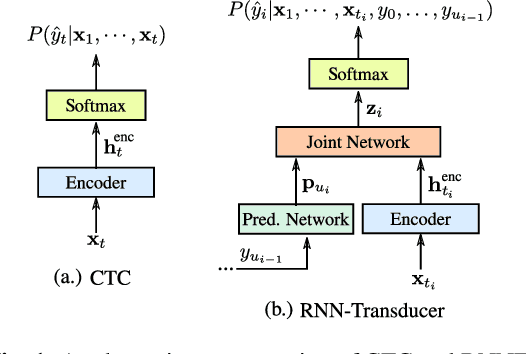
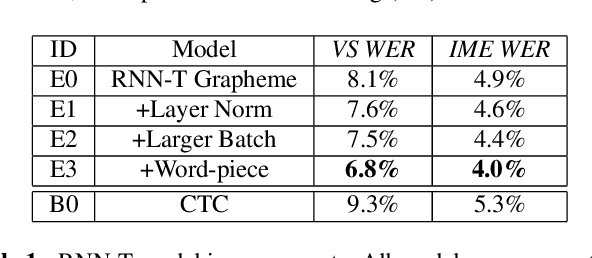

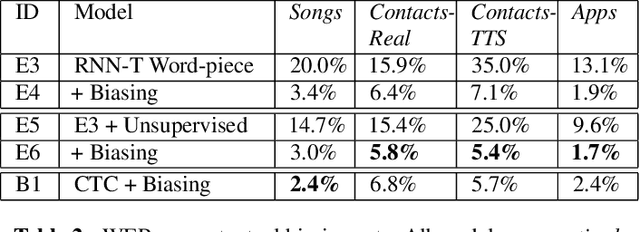
Abstract:End-to-end (E2E) models, which directly predict output character sequences given input speech, are good candidates for on-device speech recognition. E2E models, however, present numerous challenges: In order to be truly useful, such models must decode speech utterances in a streaming fashion, in real time; they must be robust to the long tail of use cases; they must be able to leverage user-specific context (e.g., contact lists); and above all, they must be extremely accurate. In this work, we describe our efforts at building an E2E speech recognizer using a recurrent neural network transducer. In experimental evaluations, we find that the proposed approach can outperform a conventional CTC-based model in terms of both latency and accuracy in a number of evaluation categories.
Contextual Speech Recognition with Difficult Negative Training Examples
Oct 29, 2018



Abstract:Improving the representation of contextual information is key to unlocking the potential of end-to-end (E2E) automatic speech recognition (ASR). In this work, we present a novel and simple approach for training an ASR context mechanism with difficult negative examples. The main idea is to focus on proper nouns (e.g., unique entities such as names of people and places) in the reference transcript, and use phonetically similar phrases as negative examples, encouraging the neural model to learn more discriminative representations. We apply our approach to an end-to-end contextual ASR model that jointly learns to transcribe and select the correct context items, and show that our proposed method gives up to $53.1\%$ relative improvement in word error rate (WER) across several benchmarks.
Toward domain-invariant speech recognition via large scale training
Aug 16, 2018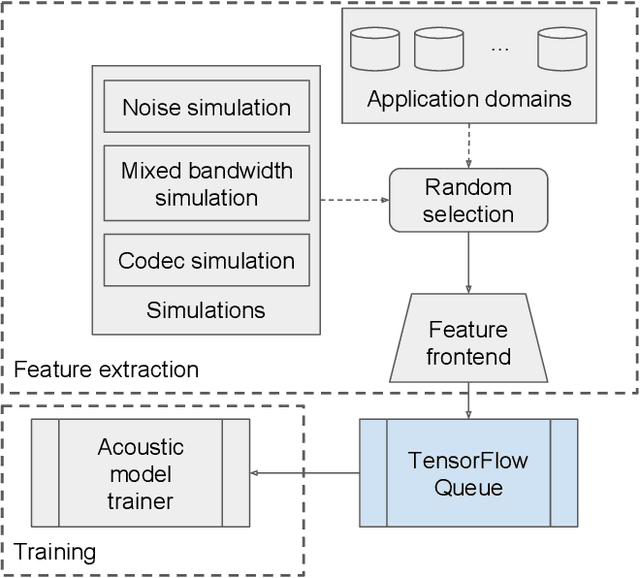
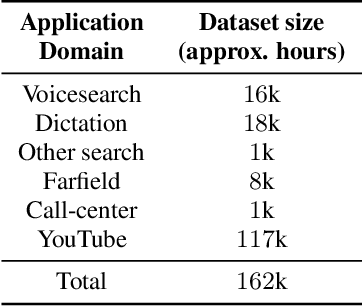

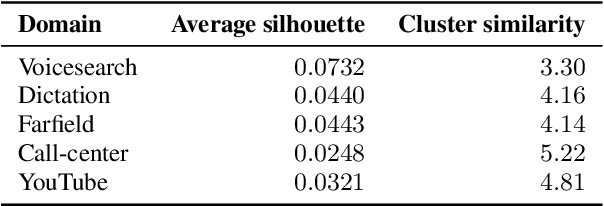
Abstract:Current state-of-the-art automatic speech recognition systems are trained to work in specific `domains', defined based on factors like application, sampling rate and codec. When such recognizers are used in conditions that do not match the training domain, performance significantly drops. This work explores the idea of building a single domain-invariant model for varied use-cases by combining large scale training data from multiple application domains. Our final system is trained using 162,000 hours of speech. Additionally, each utterance is artificially distorted during training to simulate effects like background noise, codec distortion, and sampling rates. Our results show that, even at such a scale, a model thus trained works almost as well as those fine-tuned to specific subsets: A single model can be robust to multiple application domains, and variations like codecs and noise. More importantly, such models generalize better to unseen conditions and allow for rapid adaptation -- we show that by using as little as 10 hours of data from a new domain, an adapted domain-invariant model can match performance of a domain-specific model trained from scratch using 70 times as much data. We also highlight some of the limitations of such models and areas that need addressing in future work.
 Add to Chrome
Add to Chrome Add to Firefox
Add to Firefox Add to Edge
Add to Edge